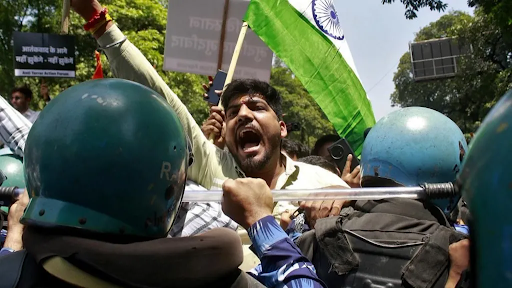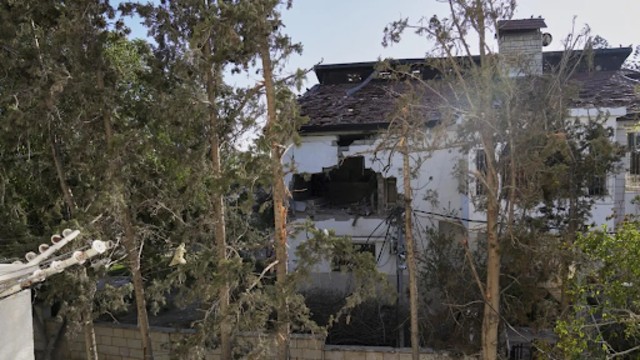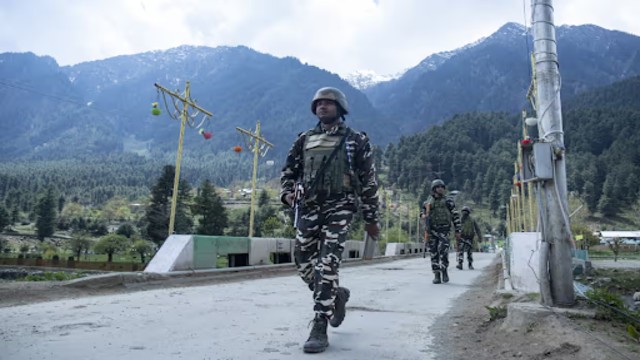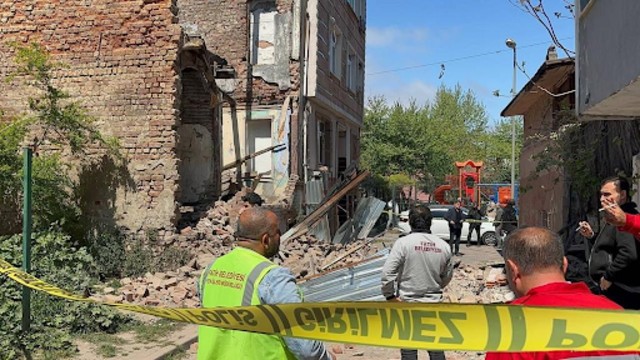
A rescue worker moves through the debris in Mandalay on Monday. REUTERS
Rescue teams are still searching for survivors in Myanmar, three days after a powerful 7.7-magnitude earthquake devastated the region. The quake, which hit central Myanmar, has killed over 2,000 people and injured nearly 4,000. Experts fear the death toll could rise significantly in the coming days.
The earthquake struck Myanmar's Sagaing region near Mandalay, the country’s former royal capital. The tremors were so strong they caused buildings to collapse as far away as Bangkok, Thailand, where at least 18 people were killed. In Bangkok, an under-construction high-rise crumbled, leaving dozens of workers trapped. Rescue teams are still pulling people from the rubble, but hopes of finding survivors are fading.
Widespread Devastation and Destruction
The quake caused extensive damage across central Myanmar. Bridges, roads, and buildings were destroyed, cutting off entire towns. The Inwa Bridge over the Irrawaddy River near Mandalay collapsed, making it difficult for aid to reach the worst-hit areas. Communication networks are also down in many places, making it harder for rescue teams to coordinate.
Historic sites, including temples and pagodas, were badly damaged. In Mandalay, a Buddhist monastery collapsed during an exam, killing over 160 monks. The city’s mosques, which were full of worshippers attending Friday prayers, also suffered heavy damage.
In the quake-hit areas, thousands of people are now homeless. Many are sleeping on the streets, fearing aftershocks. Relief workers say there is an urgent need for food, water, and medical supplies.
Emotional Survival Stories Amidst the Tragedy
Despite the destruction, there have been some incredible survival stories. In Mandalay, rescuers saved two teenage girls and their grandmother, who were trapped in a small air pocket beneath the rubble of their home. They had spent 15 hours banging on broken concrete with a butter knife to alert rescuers.
In Bangkok, some families are still waiting near the collapsed building, hoping their loved ones will be found alive. One woman described how she and her friend were trapped for five hours under a hotel’s broken ceiling, crouching in darkness. They used their phone’s flashlight to clear the debris covering them.
International Aid Arrives
Myanmar's military government, which rarely asks for international help, has appealed for assistance. Several countries have sent aid teams. China was the first to arrive, offering $13.8 million in humanitarian aid. Russia sent specialists with search dogs, doctors, and mental health experts.
The United States also sent a rescue team, along with emergency supplies. Meanwhile, the United Nations pledged $5 million in aid and deployed teams to help with the relief efforts. However, damaged roads and broken communication networks are slowing down the aid distribution.
Aftershocks and Ongoing Danger
The region has experienced several aftershocks, the largest being 6.7 in magnitude. Seismologists warn that aftershocks could continue for weeks, making the situation even more dangerous.
This earthquake is the most powerful to hit Myanmar in over a century. The last one of a similar scale was in 1912. Experts say the earthquake released energy equivalent to 334 atomic bombs.















